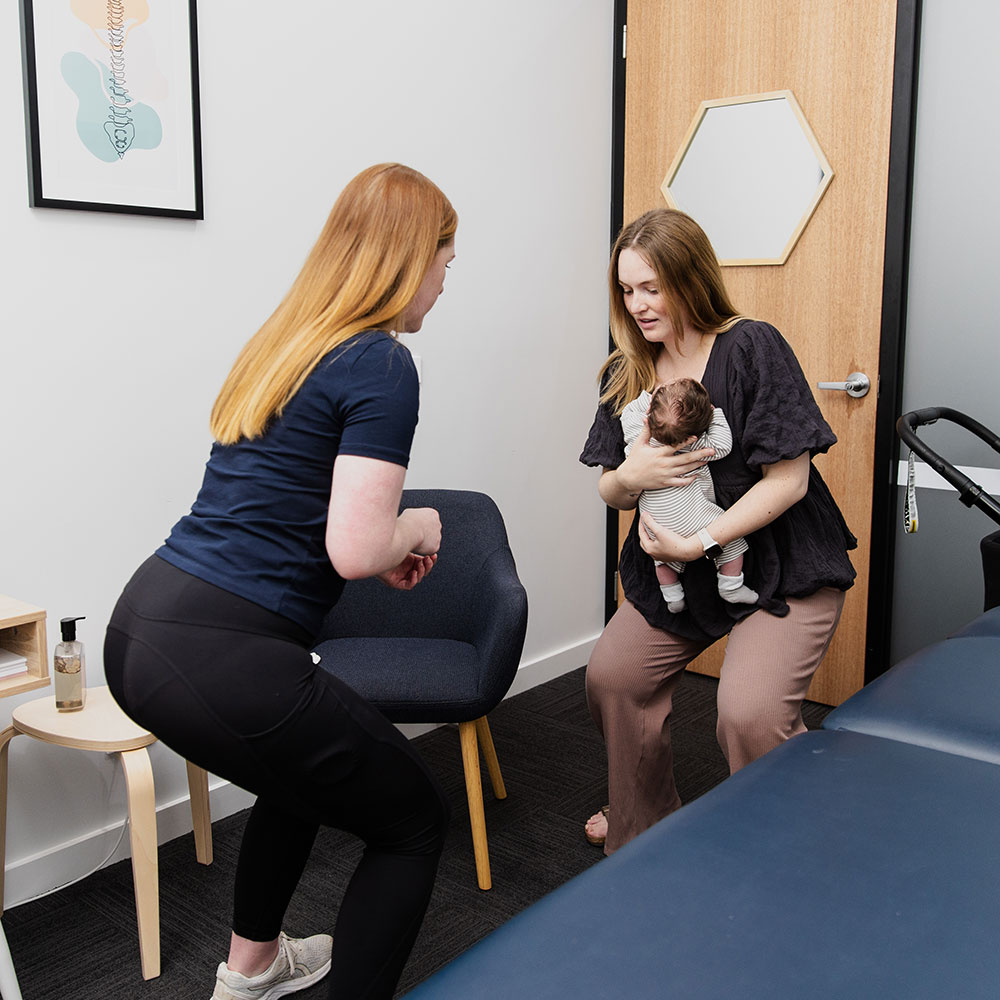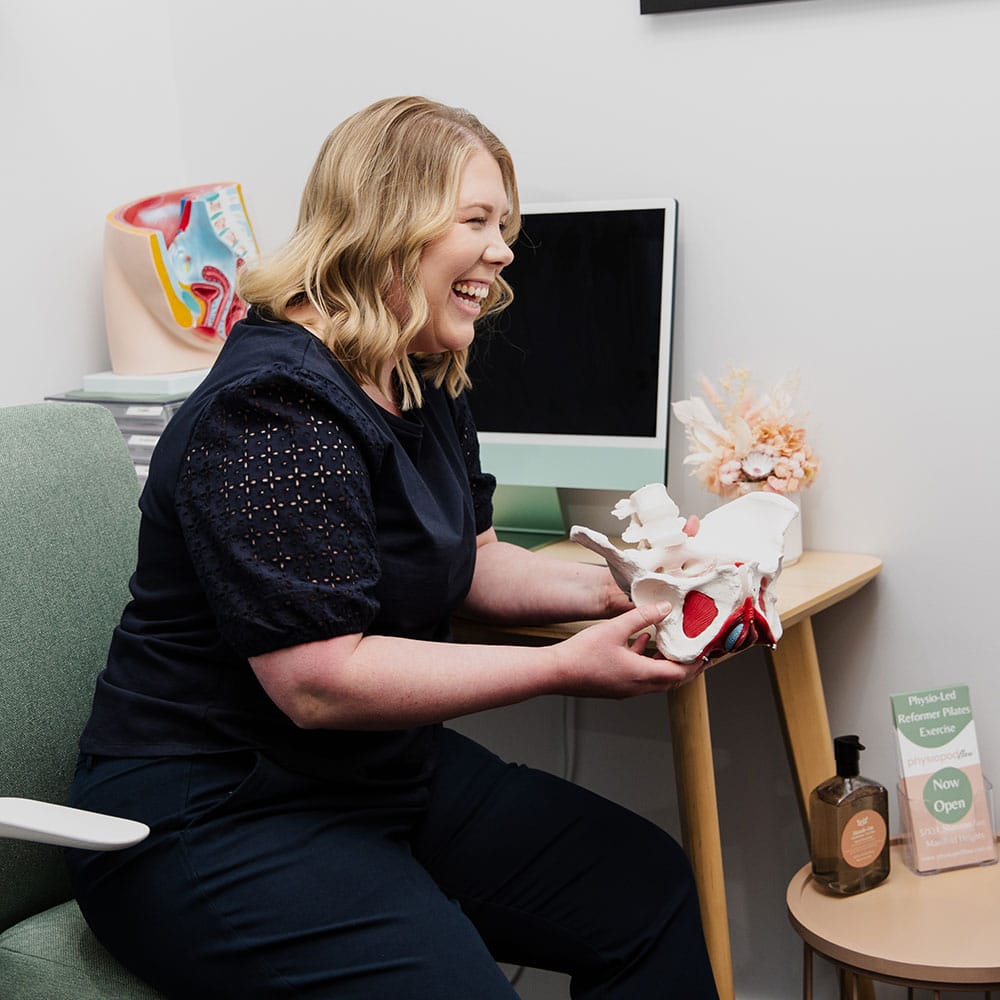Physiotherapy
Bladder Health In Geelong.
Urinary Incontinence is a very common issue, impacting one in three Australians.
Bladder leaking can range from a drop to complete loss of control and does not just affect the elderly.
The good news is Bladder Incontinence Physio can help resolve the issue conservatively without any invasive procedures or medication.
There are 3 type of Urinary Incontinence:
1. Stress Urinary Incontinence
Stress Urinary Incontinence will occur when urine leaks with pressure on the abdomen and bladder with activity. This can be running, jumping, coughing or sneezing. SUI is often seen during menopause, post-pregnancy and commonly in elite athletes and active women.
2. Urge Urinary Incontinence
Urge Urinary Incontinence is sometimes known as Overactive Bladder. It is a sudden feeling of needing to urinate and does not always occur with a full bladder and may occur with leakage prior to going to the toilet. Pelvic Floor Dysfunction as well as an emotional component like stress and/or anxiety can lead to UUI. Treatment is centred around managing the physical pelvic floor component along with brain training to help regain control of your bladder.
3. Overflow Urinary Incontinence
People suffering with Overflow Urinary Incontinence will have difficulty urinating and emptying their bladder. There urine stream can be small and slow as well as straining to urinate. There can be numerous causes for OUI which can include overactive pelvic floor, prolapse and some medications.
The Assessment Process
Your Physiotherapist will discuss with you your bladder history and symptoms and may ask you to complete a bladder diary over a short period of time. With your consent, your Physiotherapist can conduct an internal assessment which will help to understand your pelvic floor function and the presence of any prolapse. A full body assessment will also help determine any other external factors that may be contributing to your bladder dysfunction.
Physiotherapy Management for Bladder Dysfunction
After confirming your diagnosis, your Physiotherapist will determine the best treatment plan for you. This can include pelvic floor training exercises and techniques. Controlling other external factors like loading techniques.
Meet Our Bladder Health Physiotherapy Team
Make An Appointment
Ready to address your bladder health concerns and regain control? Book your appointment with our Women’s Health Physiotherapists today and take the first step towards improved bladder function and confidence.
Bladder Physiotherapy
Frequently Asked Questions
Where Are You Located?
Newtown
95 Nicholas Street, Newtown VIC 3220
We are located on Nicholas Street around the corner from Enzo Pennys butcher.
Is There Parking Available?
Newtown
There is plenty of parking in front of the building and along Nicholas Street.
Bannockburn
Large parking area located at the rear of the practice.
How Long Are Appointments?
If it is your first visit, please allow for 1 hour, except for 30mins for General Podiatry. You will be advised before your appointment through booking confirmation or staff as to how long it will be.
What Should I Bring With Me?
Along with yourself please bring any relevant imaging such as Xray’s, MRIs, Ultrasounds ect that you may have. Any referral you may have been given from Doctors or others. If you are seeing the Podiatrist please bring any relevant footwear, such as shoes you work in, run in, play sport in or is giving you pain. If you are able to wear or bring with you shorts or active wear, this will allow us to assess the lower limbs much more effectively.
How Can I Cancel My Appointment?
Cancellation Policy
We have a 24-hour cancellation and non-attendance policy. Please notify us as soon as you are able so we can offer the time to someone else. Failure to notify us of your cancellation may incur a $60 charge.
What Payment Options Are Available?
We have an onsite HICAPS machine to claim any Health Fund rebates for Physiotherapy and Podiatry (please check your health fund for rebates as each fund and level of cover is different). We are also able to claim GP referred care plans on site (please note there is a gap after a care plan rebate depending on your appointment).

Related Treatments
Our Affiliates


PhysioPod Flow - Reformer Pilates Exercise
Our Pilates Reformer classes are a great form of exercise for pre and postnatal women, a form of rehab or just to stay fit and healthy. All our classes are run by our Women’s Health Physios.
Cycling Bike Fit
Every cyclist is different so not all bike set up should be the same. A proper fit Bike Fit with our trained fitter Luke can help reduce pain while riding as well as prevent injury and improve performance.
Not sure if you need to see a Physio or a Podiatrist?
The Collective Body Consult™️ Might Be For You
The Collective Body Consult™ is our unique, innovative assessment model which combines both Physiotherapy and Podiatry together in the same initial appointment.
By utilising the experience and expertise of two health professionals in the one consultation, we are able to thoroughly discuss and assess your pain or concern in depth.
Follow Us
@physiopodco















